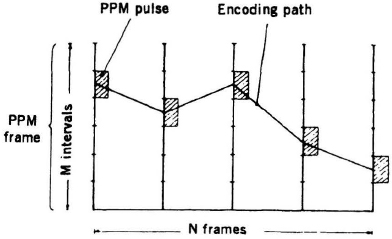6.7 CHANNEL CODING WITH PULSE POSITION MODULATION
The bit error probability performance of a digital link can often be improved by the insertion of channel coding. Channel coding is a form of additional coding placed on the transmitted data bits prior to digital transmission so that the subsequent receiver decoding is achieved with a better (lower) PE than if the bits were transmitted directly. In channel coding, the data bit sequence is converted (coded) into a sequence of channel symbols which are transmitted over the digital link. After receiver processing to recover the symbol sequence, the symbols are converted back (channel decoded) into the bit sequence with the improved PE.
A block diagram of the channel-coded optical system is shown in Figure 6.17. The source data bits are channel coded to the symbol sequence, which may also be binary symbols. The symbols are transmitted over the optical link using the optical-digital transmission methods previously discussed. The receiver photodetector output is processed to recover the transmitted symbols.

Figure 6.17. Optical link with channel encoding and decoding.

Figure 6.18. Coding tree paths in PPM decoding.
The channel decoder then converts the recovered symbols back to the data bits by inverse mapping of the channel coder. The ...
Get Optical Communications, 2nd Edition now with the O’Reilly learning platform.
O’Reilly members experience books, live events, courses curated by job role, and more from O’Reilly and nearly 200 top publishers.

